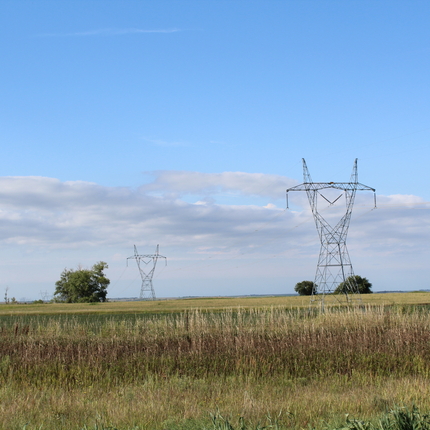By Cody Smith, former staff member | Published in the Norfolk Daily News on March 16, 2021
In mid-February, a large swath of the Midwest and Great Plains faced extreme cold and winter weather. While many states, including Nebraska, were impacted, Texas was by far the hardest hit by these events.
What happened in Texas was tragic and our thoughts are with the millions of people who were left without power, are dealing with damaged homes, or worse. In the weeks since this crisis unfolded, there has been no shortage of finger-pointing, blaming and misinformation. It appears many of us have missed the point—the time has come to discuss the integrity of our electric grid and actions that can improve resiliency.
While what happened in Texas was an abnormal weather event with conditions that seemed unforeseeable to many, it represents a trend that may become more familiar across the country. Given the high frequency of extreme weather events we’ve experienced across the U.S. in the last several years, preparing for potential worse case scenarios should be an important consideration for utilities and regulators. Let’s be clear, our climate is changing and as that continues to happen weather events similar to what took place in Texas are occurring more often. Simultaneously, these extreme weather events are having a larger impact on the communities they strike. They’re having a larger impact on our electric grid, too.
So, using Texas as a case study, what can we learn to ensure that we are prepared for the next major weather event and equipped to react more quickly and effectively in recovery? It’s helpful to start with the facts of what actually happened in the Lone Star State.
According to the Electric Reliability Council of Texas, nearly 30 GW of thermal generation, which includes coal, gas, and nuclear, went offline because of fuel shortages, frozen pipelines, or faulty equipment. Meanwhile, about 16 gigawatts (GW) of renewable energy—mostly composed of wind—was taken offline due to freezing conditions.
It is also helpful to look at what happened in other states, especially those that were part of larger, regional electric grids. In other parts of the U.S., including Nebraska, impacted by the polar vortex, utilities and regional transmission operators were able to implement measures that controlled the magnitude of the ramifications for consumers. Although many still experienced outages or blackouts, in most cases these were limited and planned rather than a result of system failures. In fact, this strategy largely ensured that customers throughout the Midwest and Great Plains avoided the same experience as Texas.
Texas is not part of a regional grid. As a result, their ability to hedge against extreme events relies on an intrastate network that wasn’t able to keep up. As we look to prevent the same kinds of hardship and tragedy going forward, we must understand the value of regional transmission planning and consider options that take advantage of the geographic and resource diversity that makes our power systems more resilient.
Upgrading the electric grid to be more seamlessly interconnected is a high priority that will create new capacity on the system as it continues to host more diverse generation, such as renewable wind and solar. These changes will also help replace the aging infrastructure that contributed to this problem.
Improvements can also be realized through greater investments in weatherization for existing generation and infrastructure. We should also ask utilities and policymakers alike to prioritize the diversification of generating resources, including distributed renewable energy and energy storage.
The solutions that help us avoid what happened in Texas are not simple, but they are also not unknown or new. In the wake of these events, we must recommit ourselves to building a more reliable and dependable electric grid through robust investment and smart public policy. If we do this, we will put our country on a brighter, more resilient path to a 21st century power grid.





